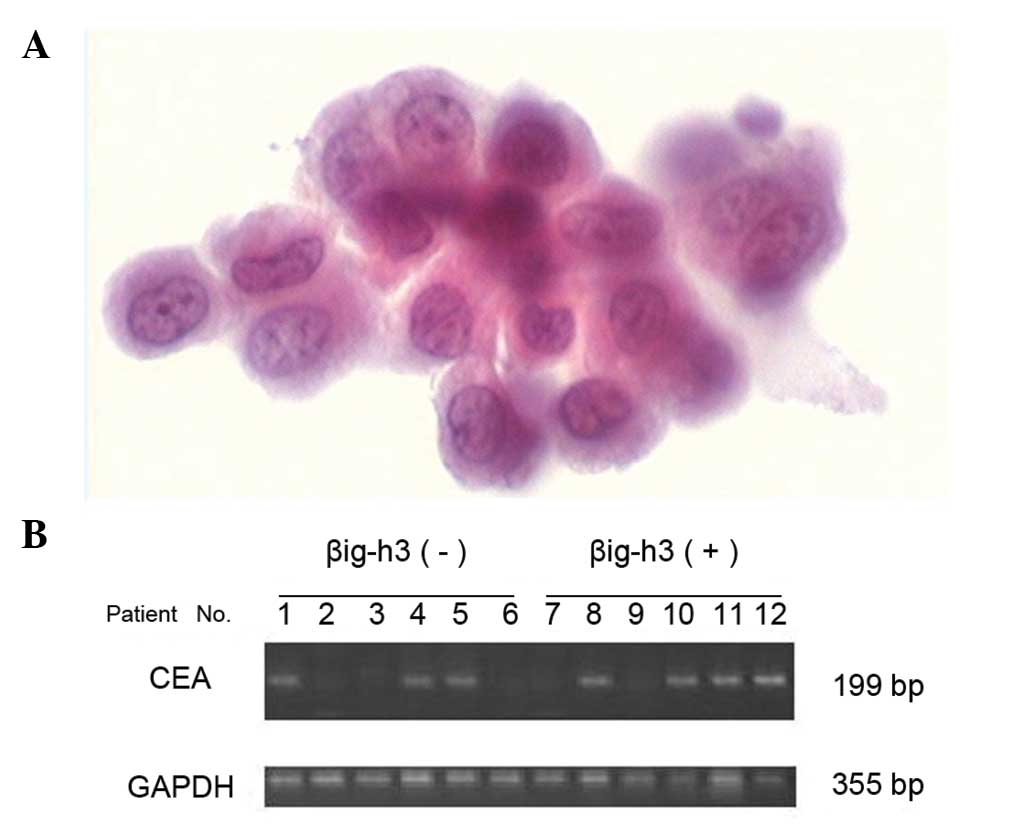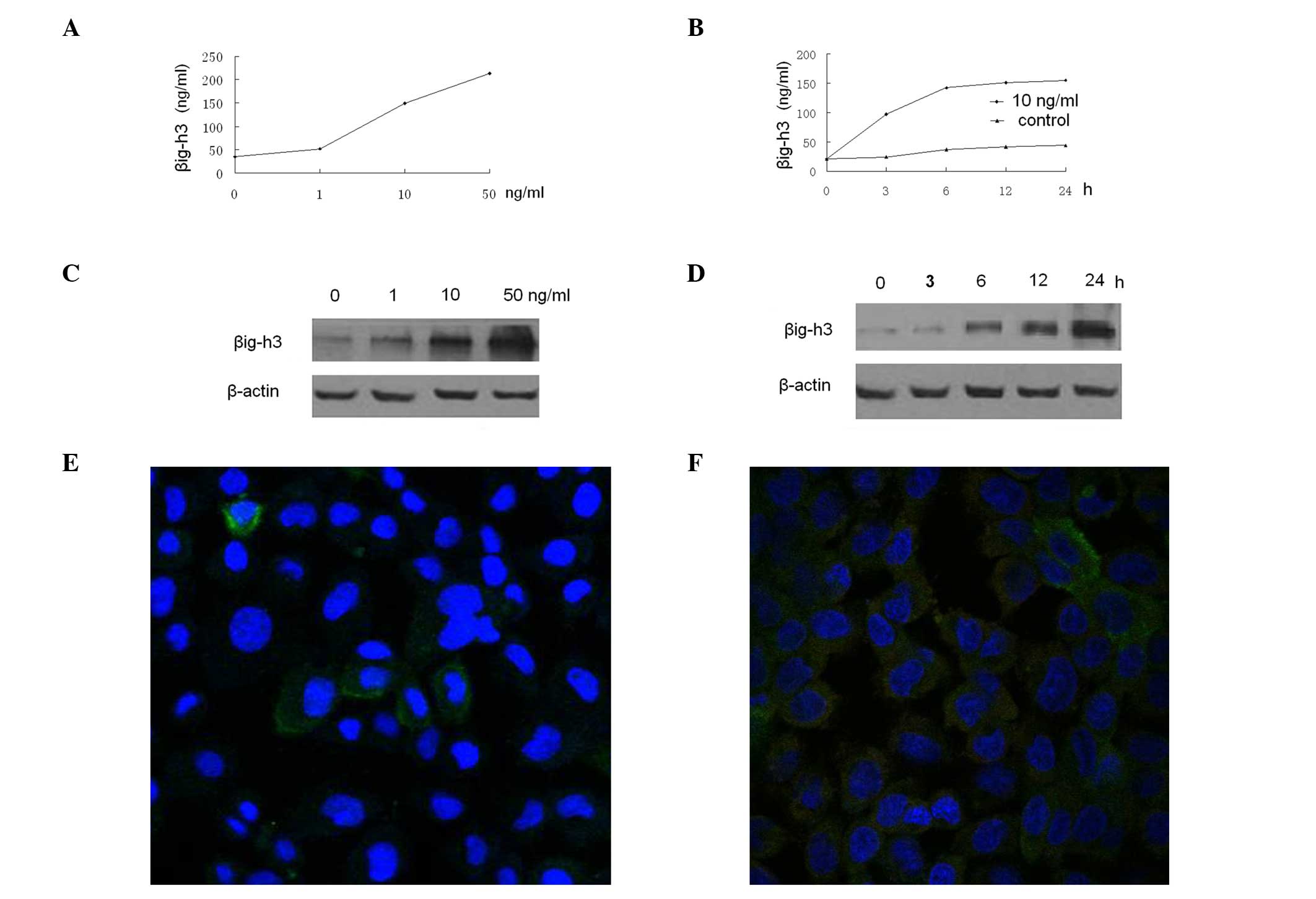|
1
|
Jemal A, Siegel R, Ward E, Hao Y, Xu J,
Murray T and Thun MJ: Cancer statistics, 2008. CA Cancer J Clin.
58:71–96. 2008. View Article : Google Scholar
|
|
2
|
Goggins WB and Wong GK: Poor survival for
US Pacific Islander cancer patients: evidence from the
Surveillance, Epidemiology, and End Results database: 1991 to 2004.
J Clin Oncol. 25:5738–5741. 2007. View Article : Google Scholar : PubMed/NCBI
|
|
3
|
D’Angelica M, Gonen M, Brennan MF,
Turnbull AD, Bains M and Karpeh MS: Patterns of initial recurrence
in completely resected gastric adenocarcinoma. Ann Surg.
240:808–816. 2004.PubMed/NCBI
|
|
4
|
Roviello F, Marrelli D, Manzoni G,
Morgagni P, Di Leo A, Saragoni L and De Stefano A: Italian Research
Group for Gastric cancer: Prospective study of peritoneal
recurrence after curative surgery for gastric cancer. Br J Surg.
90:1113–1119. 2003. View
Article : Google Scholar : PubMed/NCBI
|
|
5
|
Paget S: The distribution of secondary
growths in cancer of the breast. Cancer Metastasis Rev. 8:98–101.
1989.PubMed/NCBI
|
|
6
|
Chau I, Norman AR and Cunningham D:
Multivariate prognostic factor analysis in locally advanced and
metastatic esophago-gastric cancer-pooled analysis from three
multicenter, randomized, controlled trials using individual patient
data. J Clin Oncol. 22:2395–2403. 2004. View Article : Google Scholar
|
|
7
|
Yashiro M, Chung YS, Nishimura S, Inoue T
and Sowa M: Fibrosis in the peritoneum induces by scirrhous gastric
cancer cells may act as ‘soil’ for peritoneal dissemination.
Cancer. 77:1668–1675. 1996.PubMed/NCBI
|
|
8
|
Rieppi M, Vergani V, Gatto C, Zanetta G,
Allavena P, Taraboletti G and Giavazzi R: Mesothelial cells induce
the motility of human ovarian carcinoma cells. Int J Cancer.
80:303–307. 1999. View Article : Google Scholar : PubMed/NCBI
|
|
9
|
Skonier J, Bennett K, Rothwell V, Kosowski
S, Plowman G, Wallace P, Edelhoff S, Disteche C, Neubauer M,
Marquardt H, et al: βeta ig-h3: a transforming growth
factor-beta-responsive gene encoding a secreted protein that
inhibits cell attachment in vitro and suppresses the growth of CHO
cells in nude mice. DNA Cell Biol. 13:571–584. 1994.
|
|
10
|
Kawamoto T, Noshiro M, Shen M, et al:
Structural and phylogenetic analyses of RGD-CAP/betaig-h3, a
fasciclin-like adhesion protein expressed in chick chondrocytes.
Biochim Biophys Acta. 1395:288–292. 1998. View Article : Google Scholar : PubMed/NCBI
|
|
11
|
Skonier J, Neubauer M, Madisen L, Bennett
K, Plowman GD and Purchio AF: cDNA cloning and sequence analysis of
betaig-h3, a novel gene induced in a human adenocarcinoma cell line
after treatment with transforming growth factor-beta. DNA Cell
Biol. 11:511–522. 1992. View Article : Google Scholar : PubMed/NCBI
|
|
12
|
Bhowmick NA, Neilson EG and Moses HL:
Stromal fibroblasts in cancer initiation and progression. Nature.
432:332–337. 2004. View Article : Google Scholar : PubMed/NCBI
|
|
13
|
Ma C, Rong Y, Radiloff DR, Datto MB,
Centeno B, Bao S, Cheng AW, Lin F, Jiang S, Yeatman TJ and Wang XF:
Extracellular matrix protein betaig-h3/TGFBI promotes metastasis of
colon cancer by enhancing cell extravasation. Genes Dev.
22:308–321. 2008. View Article : Google Scholar : PubMed/NCBI
|
|
14
|
National Comprehensive Cancer Network.
http://www.nccn.org/professionals/physician_gls/pdf/gastric.pdf.
|
|
15
|
Sun Z, Xu YY, Wang ZN, Zhu Z, Zhang H,
Huang BJ, Xu Y, Chen JQ and Xu HM: Macroscopic serosal
classification predicts peritoneal recurrence for patients with
gastric cancer underwent potentially curative surgery. Ann Surg
Oncol. 18:1068–1080. 2011. View Article : Google Scholar
|
|
16
|
Ha SW, Bae JS, Yeo HJ, Lee SH, Choi JY,
Sohn YK, Kim JG, Kim IS and Kim BW: TGF-beta-induced protein
betaig-h3 is upregulated by high glucose in vascular smooth muscle
cells. J Cell Biochem. 88:774–782. 2003. View Article : Google Scholar : PubMed/NCBI
|
|
17
|
Roukos DH, Lorenz M, Karakostas K,
Paraschou P, Batsis C and Kappas AM: Pathological serosa and
node-based classification accurately predicts gastric cancer
recurrence risk and outcome, and determines potential and
limitation of a Japanese-style extensive surgery for Western
patients: a prospective with quality control 10-year follow-up
study. Br J Cancer. 84:1602–1609. 2001.
|
|
18
|
Bando E, Yonemura Y, Takeshita Y,
Taniguchi K, Yasui T, Yoshimitsu Y, Fushida S, Fujimura T,
Nishimura G and Miwa K: Intraoperative lavage for cytological
examination in 1,297 patients with gastric carcinoma. Am J Surg.
178:256–262. 1999. View Article : Google Scholar : PubMed/NCBI
|
|
19
|
Kodera Y, Nakanishi H, Yamamura Y, Shimizu
Y, Torii A, Hirai T, Yasui K, Morimoto T, Kato T, Kito T and
Tatematsu M: Prognostic value and clinical implications of
disseminated cancer cells in the peritoneal cavity detected by
reverse transcriptase-polymerase chain reaction and cytology. Int J
Cancer. 79:429–433. 1998. View Article : Google Scholar
|
|
20
|
Lv ZD, Na D, Liu FN, Du ZM, Sun Z, Li Z,
Ma XY, Wang ZN and Xu HM: Induction of gastric cancer cell adhesion
through transforming growth factor-beta1-mediated peritoneal
fibrosis. J Exp Clin Cancer Res. 29:129–139. 2010.PubMed/NCBI
|
|
21
|
Na D, Liu F, Miao Z, Du Z and Xu H:
Destruction of gastric cancer cells to mesothelial cells by
apoptosis in the early peritoneal metastasis. J Huazhong Univ Sci
Technolog Med Sci. 29:163–168. 2009. View Article : Google Scholar : PubMed/NCBI
|
|
22
|
Lv ZD, Na D, Ma XY, Zhao C, Zhao WJ and Xu
HM: Human peritoneal mesothelial cell transformation into
myofibroblasts in response to TGF-β1 in vitro. Int J Mol Med.
27:187–193. 2011.PubMed/NCBI
|
|
23
|
Matsuoka T, Hirakawa K, Chung YS, Yashiro
M, Nishimura S, Sawada T, Saiki I and Sowa M: Adhesion polypeptides
are useful for the prevention of peritoneal dissemination of
gastric cancer. Clin Exp Met. 16:381–388. 1998. View Article : Google Scholar : PubMed/NCBI
|
|
24
|
Ahmed N, Riley C, Rice G and Quinn M: Role
of integrin receptors for FN, collagen and laminin in the
regulation of ovarian carcinoma functions in response to a matrix
microenvironment. Clin Exp Metastasis. 22:391–402. 2005. View Article : Google Scholar : PubMed/NCBI
|













